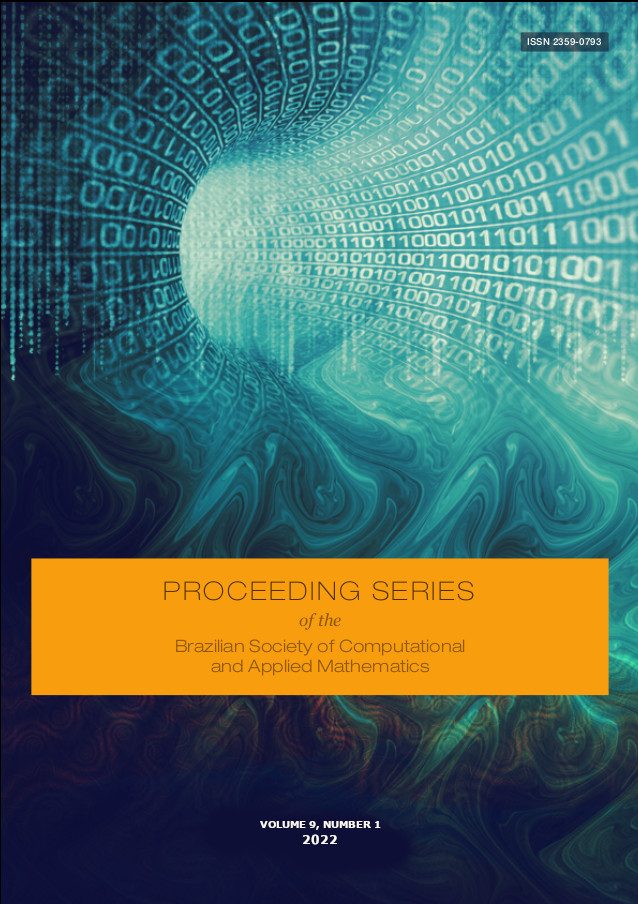Effective elastic properties of alumina-zirconia composite ceramics by a 2D computational homogenization procedure
DOI:
https://doi.org/10.5540/03.2022.009.01.0248Palavras-chave:
composite ceramics, effective elastic properties, computational homogenization, finite elements, uniform and periodic boundary conditionsResumo
Composites have applications in many industrial segments, where different materials are combined to obtain improved mechanical properties. Thus, the determination of the macroscopic constitutive behavior of composites with accuracy is important to provide the desired properties. In this context, the present work explores a 2D computational homogenization procedure to compute the effective elastic properties of alumina-zirconia composite ceramics. The average-based homogenization theory is used to obtain the homogenized or effective constitutive behavior. The composite is modeled by the concept of Representative Volume Element (RVE), which is numerically simulated with finite elements. Simulations are performed considering the uniform and periodic boundary conditions. The computationally homogenized results for the elasticity modulus are close to the experimental results compared. The boundary condition has a significant influence in the case of the shear modulus. Furthermore, the computational homogenization framework is an interesting tool for designing composites with specific properties.
Downloads
Referências
A. Khaskhoussi et al. “Properties and microstructural aspects of TiO 2 -doped sintered Alumina-Zirconia composite ceramics”. In: International Journal of Applied Ceramic Technology (2018).
W. Pabst et al. “Preparation and characterization of porous alumina–zirconia composite ceramics”. In: Journal of the European Ceramic Society 31 (14 2011), pp. 2721–2731.
M. Boniecki et al. “Mechanical properties of alumina/zirconia composites”. In: Ceramics International (2019), S0272884219325970.
V. Naglieri et al. “Elaboration of Alumina-Zirconia Composites: Role of the Zirconia Content on the Microstructure and Mechanical Properties”. In: Materials 6 (5 2013), pp. 2090–2102.
W. Voigt. “Ueber die Beziehung zwischen den beiden Elasticitätsconstanten isotroper Körper”. In: Annalen der Physik 274 (121889), pp. 573–587. issn: 0003-3804,1521-3889.
A. Reuss. “Berechnung der Fließgrenze von Mischkristallen auf Grund der Plastizitätsbedingung für Einkristalle .” In: ZAMM - Journal of Applied Mathematics and Mechanics / Zeitschrift für Angewandte Mathematik und Mechanik 9 (1 1929), pp. 49–58.
Z. Hashin and S. Shtrikman. “A variational approach to the theory of the elastic behaviour of multiphase materials”. In: Journal of the Mechanics and Physics of Solids 11 (2 1963), pp. 127–140.
S. L. Omairey, P. D. Dunning, and S. Sriramula. “Development of an ABAQUS plugin tool for periodic RVE homogenisation”. In: Engineering with Computers (2018).
H. Christoff B. G. and; Brito-Santana, R. Talreja, and V. Tita. “Development of an ABAQUS plug-in to evaluate the fourth-order elasticity tensor of a periodic material via homogenization by the asymptotic expansion method”. In: Finite Elements in Analysis and Design 181 (2020), p. 103482.
W. Pabst et al. “Effective elastic properties of alumina-zirconia composite ceramics. Part 5 - Tensile modulus of alumina–zirconia composite ceramics”. In: Ceramics - Silikáty 49 (2005), pp. 77–85.
J. F. W. Bishop and R. Hill. “XLVI. A theory of the plastic distortion of a polycrystalline aggregate under combined stresses.” In: Philos. Mag. Series 5 42 (327 1951), pp. 414–427.
J. Mandel. Plasticité classique et viscoplasticité. Udine, Italy: Springer, 1971, p. 187.

